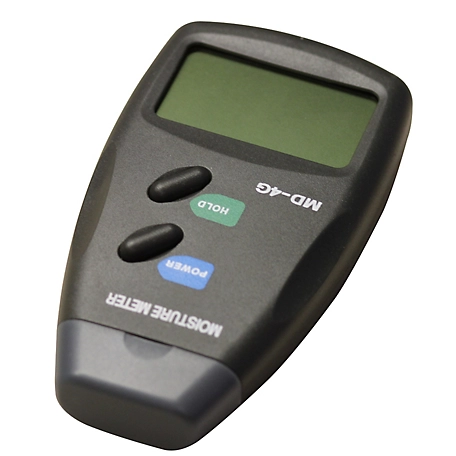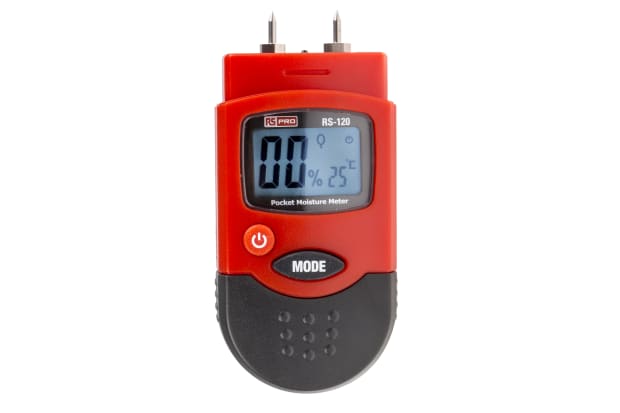Recognizing the Different Kinds Of Moisture Meters and Their Applications
Recognizing the Different Kinds Of Moisture Meters and Their Applications
Blog Article
Explore the World of Dampness Meters: Every Little Thing You Required to Know
In the world of wetness meters exists a globe of accuracy and functionality that typically goes unnoticed. These tools, while apparently straightforward, hold a wide range of information that can considerably influence different markets and applications. Comprehending just how moisture meters run, the different types readily available, and their diverse usages can lose light on their significance in ensuring quality and performance. By exploring the complexities of dampness meters, one can discover a useful device that goes beyond mere measurement, using understandings that can make a significant difference in countless fields.
Just How Wetness Meters Work
Wetness meters run by measuring the electric conductivity or capacitance of materials to identify the wetness web content present - Moisture Meter. These meters are invaluable tools across numerous markets, including woodworking, farming, and building. By utilizing various techniques such as pin-type or pinless innovation, wetness meters provide precise readings that help professionals make educated choices
Pin-type wetness meters function by inserting the sharp pins right into the material being tested. The electrical conductivity in between the pins is then measured, with greater dampness levels leading to enhanced conductivity. On the other hand, pinless moisture meters utilize electro-magnetic signals to scan a bigger location without creating any damage to the product's surface area. These meters are perfect for rapidly assessing wetness degrees in huge locations or ended up items.
Despite the technique utilized, moisture meters play a vital duty in preventing issues such as mold growth, architectural damages, or item flaws brought on by excess wetness. Comprehending exactly how these meters work is vital for making sure the high quality and integrity of products in numerous applications.
Kinds Of Wetness Meters
Offered the essential function moisture meters play in numerous markets, it is important to understand the various types readily available to experts for precisely assessing dampness levels. There are largely 2 main kinds of moisture meters: pinless and pin-type moisture meters.
Pin-type dampness meters use 2 pins that are placed right into the material being examined to determine the electric resistance between them. This approach is typically made use of for wood, drywall, and various other building products. Pin-type meters provide exact analyses at particular midsts, making them optimal for recognizing wetness slopes.
On the various other hand, pinless wetness meters make use of electromagnetic sensing unit plates to scan a larger location of the product without causing any type of damages. This type is appropriate for promptly scanning large locations and is generally used for floor covering, wall surfaces, and ceilings. Pinless meters are convenient for taking analyses on completed surfaces without leaving any noticeable marks.
Both kinds of moisture meters have their advantages and are selected based upon the details needs of the work handy. Understanding the differences between these kinds is essential for experts to make accurate dampness analyses.
Applications Across Industries
Construction experts count on wetness meters to analyze the moisture levels in structure materials like drywall, timber, and concrete, which is important for keeping structural stability and protecting against issues like rot or mold. The floor covering sector uses moisture meters to determine the wetness content in subfloors before installing various floor coverings, stopping pricey damages due to excess wetness. In the food sector, dampness meters are used to keep track of and regulate moisture degrees in products such as grains, nuts, and dried fruits to maintain freshness and high quality.
Tips for Making Use Of Dampness Meters
Utilize the moisture meter's calibration settings to make certain accurate readings when measuring the moisture content in different materials. Calibration is vital for the correct performance of a wetness meter. Before each use, it is recommended to check and adjust the calibration settings according to the specific material being evaluated. Furthermore, make sure the meter is have a peek at this site readied to the correct moisture array for the product you are determining to acquire the most precise results.

When making use of a pin-type dampness meter, put the pins to the ideal deepness suggested for the material being evaluated. This guarantees that the wetness readings are taken from the right deepness within the material, offering a more accurate depiction of its wetness material. For pinless moisture meters, remember to preserve appropriate contact with the product's surface area to get reputable readings.

Frequently check and change the batteries in your moisture meter to protect against unreliable readings as a result of reduced power. Store the meter in a completely dry and safe location when not in use to lengthen its lifespan and preserve its accuracy. By adhering to these tips, you can maximize the performance of your dampness meter and obtain exact moisture material dimensions across different products.

Maintenance and Calibration
To guarantee the precision of moisture content measurements, normal visit this site maintenance and calibration of the dampness meter are necessary action in its appropriate functioning. Maintenance includes keeping the dampness meter free and tidy from debris that might impact its readings. It is necessary to follow the producer's standards for cleaning up to stop damages to the gadget. Furthermore, regular calibration is necessary to verify the precision of the analyses. Calibration readjusts the moisture meter to make certain that it offers dependable and regular results.
Calibration should be carried out regularly, especially if the moisture meter is made use of regularly or in crucial applications where specific dimensions are required. By adjusting the moisture and preserving meter routinely, customers can trust the precision of the wetness content dimensions obtained.
Final Thought
Finally, moisture meters play a critical role in numerous markets by properly determining the dampness web content of materials. Recognizing how these devices work, the various kinds offered, and proper upkeep and calibration are important for getting reputable results. Whether in farming, building, or production, the usage of wetness meters assists make sure quality assurance and efficiency in procedures.
Building and construction experts depend on moisture meters to analyze the dampness degrees in structure materials like concrete, drywall, and wood, which is crucial for maintaining structural stability and avoiding concerns like rot or mold. The flooring market utilizes wetness meters to determine the dampness material in subfloors prior to installing various flooring treatments, stopping costly problems due to excess wetness.Utilize the wetness meter's calibration navigate to these guys settings to make certain precise readings when gauging the wetness material in various materials. By following these suggestions, you can take full advantage of the performance of your moisture meter and obtain accurate dampness web content measurements throughout various products.
In verdict, wetness meters play a critical function in different industries by properly gauging the dampness material of materials.
Report this page